| |
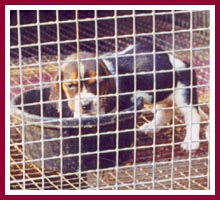 2009 WISCONSIN ACT 90 is the new
law to protect dogs and the people who buy or adopt them. It requires some dog
breeders and others involved in dog sales or adoptions to be licensed and
inspected. It also requires that dogs be examined by a veterinarian before they
are sold or adopted, and prohibits sale of puppies until they are 7 weeks old.
Wisconsin Act 90 has already passed the Legislature, been signed by the
Governor, and takes effect June 1, 2011. 2009 WISCONSIN ACT 90 is the new
law to protect dogs and the people who buy or adopt them. It requires some dog
breeders and others involved in dog sales or adoptions to be licensed and
inspected. It also requires that dogs be examined by a veterinarian before they
are sold or adopted, and prohibits sale of puppies until they are 7 weeks old.
Wisconsin Act 90 has already passed the Legislature, been signed by the
Governor, and takes effect June 1, 2011.
The law is
not specific about the standards the licensees must meet in their facilities
and in how they care for their dogs. Instead, it directs the Department of
Agriculture, Trade and Consumer Protection to write an “administrative
rule” -- ATCP 16 – and submit it to the Legislature for final review.
This is still in process. During the rule-writing process, a lot of confusion
has arisen, especially among some dog breeders who will not need to be licensed
at all. Let’s try to clear some of that up, keeping in mind the goals:
humane treatment for dogs and fairness to consumers.
|
| |
 Who Must Be
Licensed Who Must Be
Licensed  What the Proposed ATCP 16
Standards Say What the Proposed ATCP 16
Standards Say 
 Makeup/ Role of the
Advisory Committee Makeup/ Role of the
Advisory Committee  The
Process The
Process  The Role of Public
Opinion The Role of Public
Opinion 
 Enforcement Enforcement  Qualifications of
inspectors Qualifications of
inspectors  Funding This
Program Funding This
Program 
 Cost to
Businesses Cost to
Businesses  Supply of
dogs Supply of
dogs 
|
| |
 Who Must Be Licensed Who Must Be Licensed
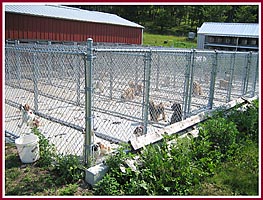 The law
covers more than “puppy mills” because good breeders come in all
sizes and so do bad breeders. All of these businesses and facilities are places
where dogs could be mishandled and consumers could be misled. The law
covers more than “puppy mills” because good breeders come in all
sizes and so do bad breeders. All of these businesses and facilities are places
where dogs could be mishandled and consumers could be misled.
However, Wisconsin Act 90 is very specific.
You’ll need a license only if you are a:
Dog breeder selling at least 25 dogs a year from at least 3
litters
Pet store or other retailer selling at least 25 dogs a year
Dog auction offering at least 50 dogs for sale a year
Non-profit animal shelter sheltering at least 25 dogs a year
-
Animal control facility that contracts with a city, village,
town or county
Flea market or other temporary market where dogs are sold
You do not need a license under any other
circumstances. There is no plan to extend the law to cover
smaller breeders, sporting dog trainers, pet owners or others.
|
| |
Top
|
| |
 What the Proposed ATCP 16 Standards Say What the Proposed ATCP 16 Standards Say
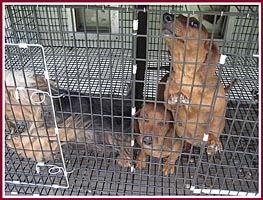 The Standards are
similar to those in other states and are what any pet owner would want and
expect, both for the sake of humane treatment and to assure receiving a healthy
animal. The Standards are
similar to those in other states and are what any pet owner would want and
expect, both for the sake of humane treatment and to assure receiving a healthy
animal.
The
Standards:
DO NOT
address breeding practices, other than whelping enclosures.
DO NOT
address docking tails or ears, or other similar practices.
-
DO contain
the flexibilty to accommodate different breeds and sizes of dogs.
DOaddress the
needs of dogs for:
Clean, safe cages or enclosures, that are large enough
to allow them to move naturally and that protect them from the elements
-
An adequate supply of clean water and clean, palatable, nutritious food
-
Daily exercise
-
Daily contact with humans and other dogs
Veterinary care when they are sick
Safe, comfortable transportation
|
| |
Top
|
| |
 Dog Sellers Advisory Committee: Makeup and Role Dog Sellers Advisory Committee: Makeup and Role
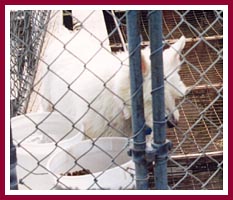 Wisconsin Act 90
required us to form an advisory
committee with up to 12 members to recommend standards for facilities and
animal care. It specified what groups would be represented. These standards are
the main part of the administrative rule, ATCP 16. Wisconsin Act 90
required us to form an advisory
committee with up to 12 members to recommend standards for facilities and
animal care. It specified what groups would be represented. These standards are
the main part of the administrative rule, ATCP 16.
The committee included four dog breeders;
representatives from two humane societies, a dog rescue group and an animal
control facility; a pet store trade group; a sport association that works with
dogs; and two veterinarians.
Although dog breeders will be the largest group of
licensees, other organizations and businesses will also need to be licensed.
This is why they were represented.
Many dog breeders sell just a few dogs a year. They
will not be regulated, so they were not represented. They did have other
opportunities for input.
All
members had an equal voice on the committee. The goal was to set
standards that would protect dogs and consumers, while still being practical
and achievable for businesses and organizations. As could be expected, no one
got everything he or she wanted in the recommendations.
The
committee was advisory. Members’
input was considered, along with comments gathered through public hearings and
written comments, but ultimately the Department of Agriculture, Trade and
Consumer Protection was responsible for writing ATCP 16.
|
| |
Top
|
| |
 The Process The Process
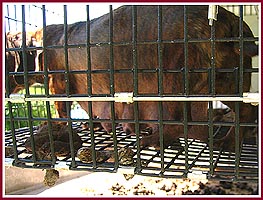 Everyone who has an
interest in Wisconsin Act 90 and ATCP 16 has had multiple opportunities to
provide input. Everyone who has an
interest in Wisconsin Act 90 and ATCP 16 has had multiple opportunities to
provide input.
It was well-publicized as it went through the
Legislature, so citizens could send comments to their legislators, and there
was a public hearing on the bill.
The advisory committee members were listed on our
website, with email address links so citizens could send comments to them.
-
Once we had drafted ATCP 16, it was posted on our
website with multiple means of providing comments. We held five public hearings
around the state, and publicized them nearly a month in advance of the first
one. At each hearing, we provided a detailed explanation of the standards we
were proposing. Many or most of those attending were there to ask questions,
which this presentation answered. The majority of those who commented supported
the standards. We did make changes to the proposed rule based on public
comments.
The Board of Agriculture, Trade and Consumer Protection
provide time at every meeting for citizens to address concerns regardless of
whether the topic is on the agenda.
The next step is for the Board to approve the final
draft of ATCP 16. It then goes to the new Legislature, where a committee in
each house has up to 60 days to review the rule. They may let it take effect,
ask for changes, or call a public hearing.
Each of these
steps gives opponents another opportunity to seek changes, and supporters the
opportunity to convince legislators to uphold the rule as written.
|
| |
Top
|
| |
 The Role of Public Opinion The Role of Public Opinion
 Regulations affect
more than just those who are regulated; they exist to serve a public need or
desire. Regulations affect
more than just those who are regulated; they exist to serve a public need or
desire.
Prior to
passage of Act 90, the public was frustrated by our inability to protect dogs
and the consumers who bought or adopted them and ended up with veterinary bills
and dogs that were unfit to be pets. This led to public calls for action and a
legislative response.
We must
consider the needs of the general public along with those of regulated parties
when we write laws and administrative rules.
|
| |
Top
|
| |
 Enforcement Enforcement
 When inspectors find
violations, the licensee is given the chance to correct it. The goal is to
solve the problem, not to punish. When inspectors find
violations, the licensee is given the chance to correct it. The goal is to
solve the problem, not to punish.
WE DO use
progressive enforcement, starting with warning letters and conferences, when we
can’t solve the problem by working with the licensee. We may move to
cease-and-desist orders and license suspensions.
WE DO take
immediate action when inspection reveals a problem that poses an imminent
threat to humans or animals.
WE DO NOT
have authority to issue citations, seize animals, or bring charges in court; we
must request local law enforcement agencies to do those things. Going to the
sheriff or district attorney is a last resort, unless there is imminent danger
to humans or animals.
Our inspectors are NOT armed.
|
| |
Top
|
| |
 Qualifications of Inspectors Qualifications of Inspectors
 DATCP inspectors
conducted more than 42,700 inspections in 2009, including dairy farms and dairy
plants, meat slaughterers and processors, grocery stores and delis, gas pumps
and price scanners, beehives, Christmas tree farms, nursery growers and
dealers, pesticide and fertilizer tanks, and animal feed mills. The
overwhelming majority of these inspections find no violations or minor
violations that are easily corrected, and confrontations with licensees are
rare. Inspectors are not heavy-handed, and are generally viewed as helpful by
businesses that want to do the right thing – which most businesses do. DATCP inspectors
conducted more than 42,700 inspections in 2009, including dairy farms and dairy
plants, meat slaughterers and processors, grocery stores and delis, gas pumps
and price scanners, beehives, Christmas tree farms, nursery growers and
dealers, pesticide and fertilizer tanks, and animal feed mills. The
overwhelming majority of these inspections find no violations or minor
violations that are easily corrected, and confrontations with licensees are
rare. Inspectors are not heavy-handed, and are generally viewed as helpful by
businesses that want to do the right thing – which most businesses do.
Our
inspectors are hired for their experience and training in the areas they are
inspecting, and may have a law enforcement background as well. They receive
initial training in the department’s compliance policies and procedures,
and ongoing training to keep up with changes in their fields and in the law.
We are
developing position descriptions for the inspectors to be hired under Act 90.
However, we will likely look for knowledge of animal husbandry, veterinary
care, animal law and similar types of expertise. They do not need to have
experience in dog breeding, because they are not inspecting reproductive
practices. You do not have to be a dog breeder to evaluate sanitation, space,
exercise and socialization for dogs, or to see when they need veterinary care.
|
| |
Top
|
| |
 Funding This Program Funding This Program
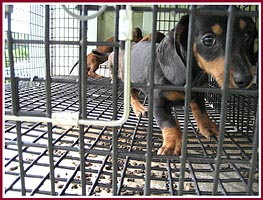 Fees paid by the licensees will pay for all costs associated
with this program: personnel salaries and benefits, supplies,
training, all other administrative costs. Fees paid by the licensees will pay for all costs associated
with this program: personnel salaries and benefits, supplies,
training, all other administrative costs.
No general tax funds will go to support this program. If
funding falls short, we cannot shift other funds to support it. We would have
to make cuts to the program or ask the Legislature to increase the license
fees.
Cost estimates were based on the experience of other
states with similar programs.
Costs may be passed on to consumers. Any additional
costs may well be offset by receiving a healthier animal with fewer and lower
veterinary bills, and less likelihood of bites and other injuries to humans and
less damage to property by poorly adjusted animals.
|
| |
Top
|
| |
 Cost to Businesses Cost to Businesses
 License fees range
from $125 a year for non-profit animal shelters to $1,000 a year for someone
selling at least 250 dogs a year. This cost should not be onerous. License fees range
from $125 a year for non-profit animal shelters to $1,000 a year for someone
selling at least 250 dogs a year. This cost should not be onerous.
Some hobbyist breeders may decide to limit sales to a
level where they will not need to be licensed.
Breeders who have good facilities and practices should
not need major investments to meet the new standards.
Some breeders may decide to go out of business rather
than improve their facilities or change their practices to meet the standards
of humane treatment.
|
| |
Top
|
| |
 Supply of Dogs Supply of Dogs
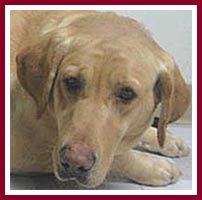 The supply of dogs in
Wisconsin is not likely to be affected by Wisconsin Act 90 or ATCP 16: The supply of dogs in
Wisconsin is not likely to be affected by Wisconsin Act 90 or ATCP 16:
It is unlikely that we will ever have a shortage of
dogs in general. Most dogs in animal shelters are strays, drop-offs, and
unplanned puppies from within our own borders.
Other states that regulate these businesses do not
report consumer difficulty in finding dogs in their own states.
Some shelters do bring in dogs from other states when
shelters elsewhere run out of space. These dogs arrive with certificates of
veterinary inspection, and under Act 90 will need to be examined by a
veterinarian before being adopted out. They do not pose an increased disease
risk to in-state breeders’ animals.
|
| |
|  Fact Sheet for Potential Licensees
(printable pdf) Fact Sheet for Potential Licensees
(printable pdf) 
 Fact Sheet for Consumers (printable
pdf) Fact Sheet for Consumers (printable
pdf) 
 ATCP 16 Full Formal Language
(pdf) ATCP 16 Full Formal Language
(pdf) 
 ATCP 16 Plain Language
Factsheet (pdf) ATCP 16 Plain Language
Factsheet (pdf) 
 Questions and Answers for Rescues/
Shelters Questions and Answers for Rescues/
Shelters  Licensing Application forms & Info (DATCP
website) Licensing Application forms & Info (DATCP
website) 
 2009 WISCONSIN ACT 90 (pdf) 2009 WISCONSIN ACT 90 (pdf) 
|
| |
Top
|
| |
| |
Act 90/ATCP 16 Information:
 ATCP 16: Who Needs a
License, Inspections, and Record-Keeping ATCP 16: Who Needs a
License, Inspections, and Record-Keeping 
 Questions and Answers for Rescues/
Shelters Questions and Answers for Rescues/
Shelters  Dog
Seller and Shelter Form Links Dog
Seller and Shelter Form Links 
 Certificates of Vet.
Inspection/Age of Transfer Certificates of Vet.
Inspection/Age of Transfer  Certificates of Vet.
Inspection FAQ Certificates of Vet.
Inspection FAQ 
 ATCP 16 Standards of Care
(General) ATCP 16 Standards of Care
(General)  ATCP 16 Standards of Care, Indoor
Facilities ATCP 16 Standards of Care, Indoor
Facilities 
 ATCP 16 Standards of Care, Outdoor
Facilities ATCP 16 Standards of Care, Outdoor
Facilities  Transporting
Dogs Transporting
Dogs 
 Act 90/ATCP 16: Facts for Potential
Licensees Act 90/ATCP 16: Facts for Potential
Licensees  Act 90/ATCP 16: Facts for Consumers Act 90/ATCP 16: Facts for Consumers 
 ATCP 16 Plain Language
Factsheet (pdf) ATCP 16 Plain Language
Factsheet (pdf)  ATCP
16 Full Formal Language (pdf) ATCP
16 Full Formal Language (pdf) 
 2009 WISCONSIN ACT 90 (pdf) 2009 WISCONSIN ACT 90 (pdf)  DATCP Dog Breeders & Sellers Law web pages DATCP Dog Breeders & Sellers Law web pages
|
| |
|